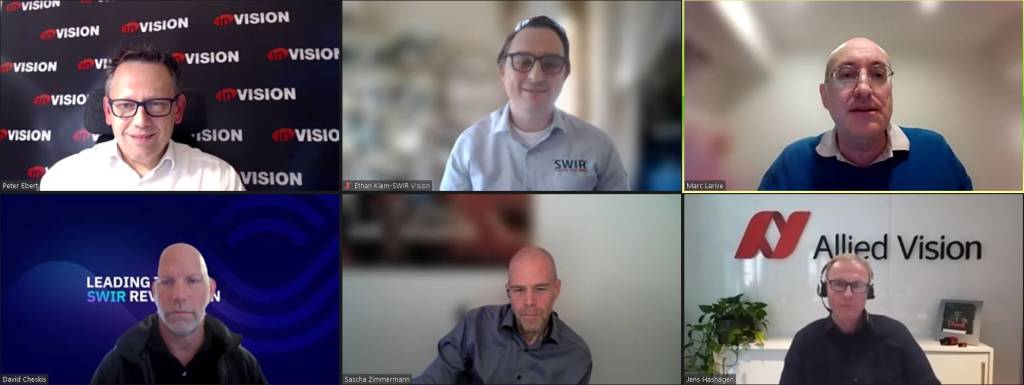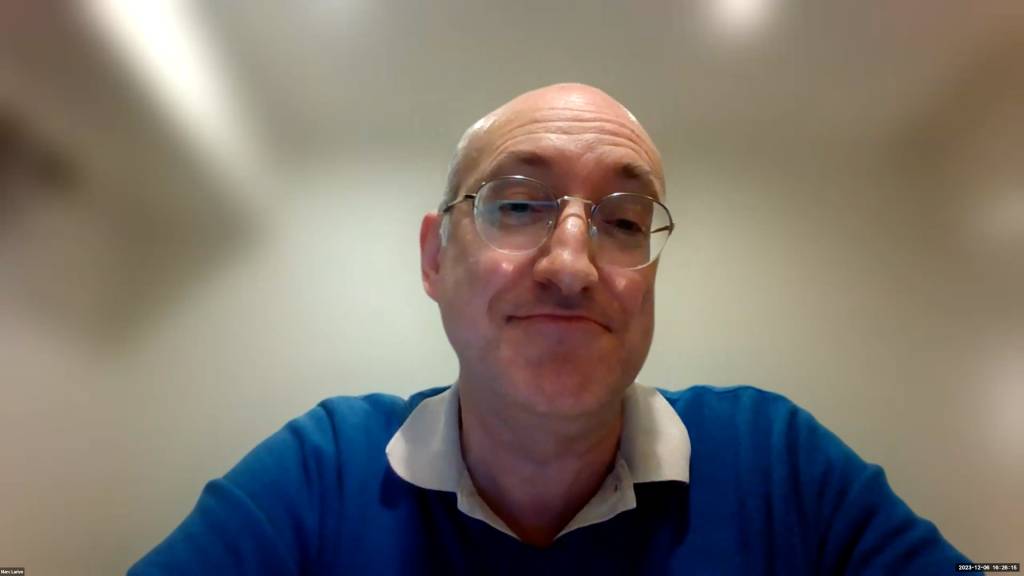
What are the advantages of the Sony IMX990/991 SenSWIR sensors?
Jens Hashagen (Allied Vision): The Sony sensors were able to reduce the pixels size from ten or 15µm down to just five microns. With these smaller structures better resolutions can be achieved. Now it is possible to sense the visible and the SWIR range at the same time at a very reasonable pricing.
Sascha Zimmermann (Macnica ATD Europe): These sensors are quite easy to integrate because they are based on global shutter technology. The quality is very reliable and the pricing structure is very interesting and may be more for the design of volumes in the future.

So why use other sensors for SWIR cameras?
Marc Larive (Xenics): For SWIR small is not always beautiful, because you need light. That is one of the reasons for using other sensor with bigger pixels. If you want to measure you need more sensitivity, which is directly proportional to the size of the pixel and limited by the noise. If you divide the pixel size by noise you get a value in the range of 0,15 for the Sony sensor and a value in the range of eight for our Xenics sensor, which is a factor of more than 60 times more sensitivity. So when you need sensitivity, you can´t use the Sony sensor. In addition, the sensor is not very fast and is not suitable for inline applications such as line scan inspections. Visible and SWIR in one sensor is very interesting, but if you use SWIR you usually need the SWIR information more than the visible. The visible information of the Sony sensor are never as good as by a normal image sensor.
Hashagen: But visSWIR it does offer some advantages if you look at spectral imaging, for example. You can apply a much broader spectral range to distinguish and classify different types of materials.
David Cheskis (Trieye): Why use another SWIR sensor? The first answer is costs. Trieye is a Startup company that develops CMOS-based SWIR image sensor technology in a classical CMOS fab. You can use 8″ and 12″ wafers and we give you the cost structure and manufacture capabilities for high volume markets and really demanding new SWIR applications. We offer the same type of spectral response that an InGaAs sensor does, but our solution has not the limitations of wafer size and costs. At the same time we are able to use our CMOS based solution for depth sensing and imaging at the same time on a pure pixel basis.
Dr. Ethan Klemm (SWIR Vision Systems): SWIR Vision Systems sells quantum dot (QD) image sensors and cameras that we are shipping since 2018. QDs are tiny semiconductor particles with unique properties which we make a thin film out of them and use for photodiodes. It just really comes down to the applications for three technologies: InGaAs, QD and Trieye. They all have different strengths and weaknesses. The strength of QD is that we can read infrared waves further. We got a 2µm to 400nm camera and are working on a 2.4µm camera to 400nm for broad spectral band applications. Another advantage is pixel count. We just released a 6MP camera. You can tell us your wanted sensor array size and give us a read out chip and we can make you an individual image sensor. We also have low noise, so the signal-to-noise ratio is an advantage for our technology. The weak point is the lower quantum efficiencies (QE). Applications with photons at low light, like stars, are not our business. But if you can use photons with lasers or machine vision applications or outdoors during the day, we can produce a sensor.

What are the advantages of the other technology approaches?
Cheskis: Trieye has a silicon array based sensor technology. In terms of technology it has the same trade offs as InGaAs which is a spectacular technology for SWIR vision but has its limitation. We have a CMOS sensor and pair it with a new laser technology which gives you the possibility with active illumination to do vision. Furthermore, we developed a depth and ranging system similar to a Lidar, which we call Sedar. So you get a SWIR image and a depth image for each pixel at the same time.
